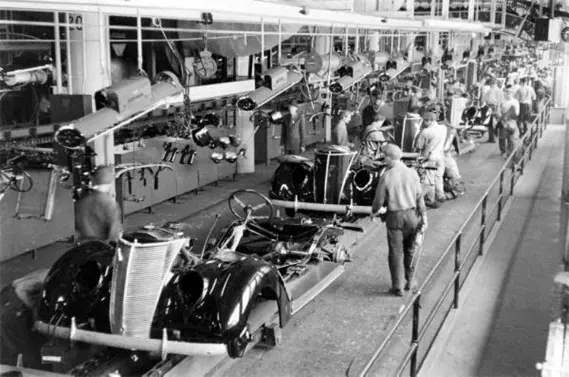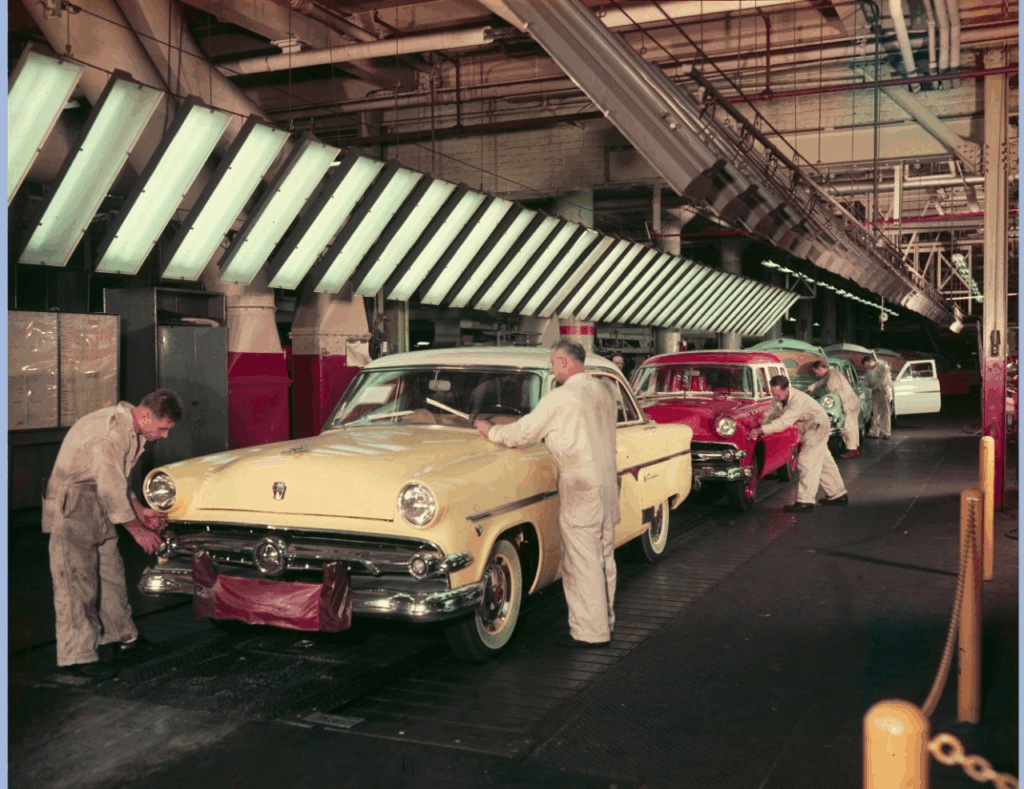Solving the Workforce Bottleneck with Bold Innovation
Imagine Detroit in 1914: the city is buzzing with innovation, and Ford Motor Company’s assembly lines are revolutionizing manufacturing. But beneath the surface, there’s a problem that no amount of mechanical ingenuity can fix: people are quitting at an astonishing rate. The work is repetitive, the hours are long, and turnover is a staggering 370% a year. Ford is hiring more than 52,000 workers just to keep 14,000 jobs filled.
Then, in a move that would stun the business world and rewrite labor history, Henry Ford announces he’s doubling the minimum wage to $5 a day. This wasn’t just a raise-it was a systems-level solution that would change the future of engineering management.

The Real Engineering Challenge: When People Are the Bottleneck
Ford’s introduction of the moving assembly line slashed Model T build time from 12.5 hours to just 93 minutes. But the human element became the bottleneck. Repetitive, high-speed work led to burnout and high turnover, which in turn caused costly stoppages and constant retraining.
Ford realized that machines weren’t the problem—keeping people in the system was. Workforce optimization is just as critical today as it was in 1914. Companies still struggle to balance productivity and employee well-being, proving that engineering solutions aren’t just about technology—they’re about people, too.
Debunking the Myth: It Wasn’t About Selling More Cars to Workers

You’ve probably heard the story: Ford paid workers more so they could afford to buy the cars they built. It’s a great soundbite, but as Forbes points out, the math doesn’t add up. Even if every Ford worker bought a new Model T each year, it would have accounted for less than 10% of production.
The real driver? Turnover was killing productivity. Ford’s wage increase was a calculated investment: pay more upfront, save millions in training costs, and keep the assembly line humming.
Inside the $5 Day: More Than Just a Paycheck
Ford’s announcement of the $5-a-day wage made headlines—but it wasn’t just a simple pay raise. It was a combination of base pay and a bonus, with strict conditions attached.
To qualify for the full wage, workers had to meet specific lifestyle standards, enforced by Ford’s Sociological Department. This wasn’t just a payroll adjustment—it was a social experiment, a profit-sharing model, and a PR masterstroke all rolled into one.
The Strings Attached to Ford’s $5 Wage
- Home Inspections – Investigators visited workers’ homes to ensure cleanliness and financial responsibility.
- Education Requirements – Immigrant workers had to attend English classes, and their children’s school attendance was monitored.
- Behavior Standards – Gambling, drinking, and renting out part of their homes were discouraged.
- Savings & Spending Rules – Ford expected workers to save responsibly, avoiding wasteful spending.
This system ensured Ford had a stable, disciplined workforce, reducing turnover and boosting productivity. Though controversial, it helped shape a more structured labor force, and the results were immediate.
The results were immediate. Thousands lined up for jobs, turnover plummeted, and productivity soared. Ford could now cherry-pick the best workers, and the Model T soon became even more affordable.
| Metric | Before $5 Day | After $5 Day |
|---|---|---|
| Daily Wage | $2.34 | $5.00 |
| Workday Length | 9 hours | 8 hours |
| Labor Turnover Rate | 370% | 16% |
| Car Production | 170,000 | 202,000 |
Engineering Takeaways: Lessons for Today

Ford’s $5 day wasn’t just about wages-it was a masterclass in systems thinking. He recognized that the efficiency of his machines depended on the stability of his people. Today, engineers and managers face similar challenges: how do you design processes that account for both technology and the human element?
Key lessons for today’s engineering leaders:
- Optimize the Whole System: Don’t ignore the “human factors” in your workflow.
- Data-Driven Decisions: Ford’s move was based on hard numbers-turnover costs, productivity losses, and the value of a stable workforce.
- Bold Changes Can Pay Off: Ford’s gamble paid for itself in less than a year and forced an entire industry to follow suit. (For more on bold engineering innovations, see our Ivan Sutherland feature.)
The Ripple Effect: Raising the Bar for Everyone

Ford’s $5-a-day wage didn’t just transform his own company—it changed the entire labor market. Other automakers had no choice but to raise their wages to remain competitive, pushing industrial workers toward a higher standard of living. This shift helped strengthen the American middle class, proving that fair wages could drive both economic growth and stability.
What’s the Takeaway for Modern Engineers?
Ford’s wage revolution is a reminder that the best engineering solutions often involve people as much as technology. Whether you’re designing an assembly line, a software platform, or a startup team, the principles are the same: optimize for the whole system, value your people, and don’t be afraid to break the mold.
What do you think?
How would you apply Ford’s systems thinking to modern engineering challenges?
If you enjoyed this, check out our look at Ivan Sutherland and the birth of CAD for another story of engineering innovation that changed the world.
